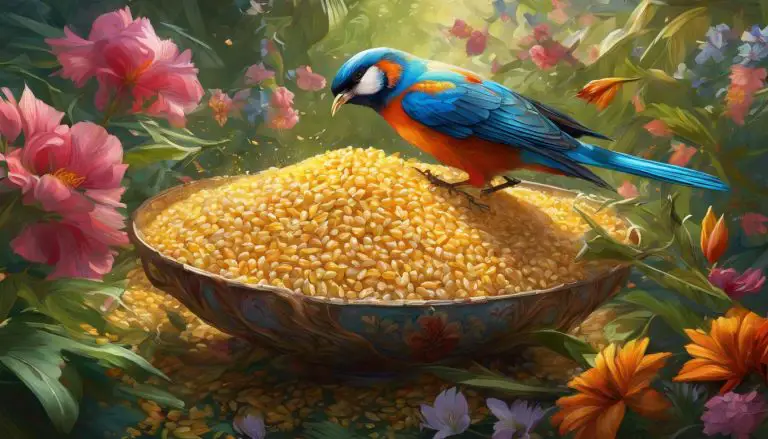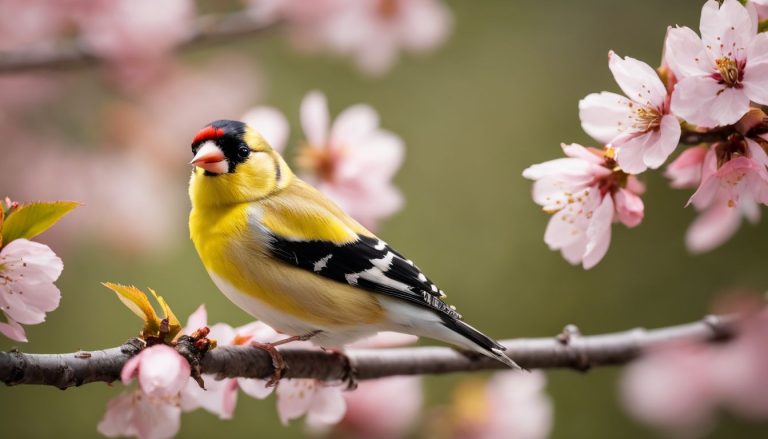Have you ever found yourself gazing into the distance, daydreaming about spotting a hummingbird fluttering around in your backyard here in the UK? I certainly have. With their dazzling colors and rapid wing flaps, it’s hard not to be enthralled by these little creatures.
Did you know there are roughly 360 species of hummingbirds, all primarily calling the Americas home? Well, after diving headfirst into this subject out of sheer curiosity, I stumbled upon some pretty intriguing facts and alternatives that I bet will pique the interest of fellow bird aficionados like us.
This piece aims to shed light on why we don’t see hummingbirds gracing our skies here in the UK but fear not—I’ll also introduce you to a mesmerizing doppelgänger: the Hummingbird hawk-moth! Prepare to embark on an unexpected journey filled with fluttering surprises.
Key Takeaways
- Hummingbirds can’t be found in the UK because they are native to the Americas and prefer warmer climates.
- The Hummingbird Hawk – Moth, which resembles hummingbirds, lives in the UK and hovers over flowers to drink nectar.
- Unlike hummingbirds, these moths are insects with a long proboscis for feeding on nectar and produce a soft buzzing sound.
- Other birds like Goldcrests and Pied Flycatchers offer opportunities for birdwatching in the UK.
- Dr. Amelia Harwing, an expert on birds, encourages planting native plants to attract moth species similar to hummingbirds.
Hummingbird Hawk-Moth: A Lookalike in the UK
The Hummingbird Hawk-Moth has a long proboscis, hovers like a hummingbird and feeds on nectar from flowers. It can be found in gardens, parks, and other flowery places across the UK.
Physical characteristics and behavior
Hummingbird hawk-moths catch eyes with their unique look and actions. They have brown bodies and red-tipped wings, resembling hummingbirds at a glance. This moth hovers in mid-air while feeding from flowers with its long proboscis, just like a hummingbird does.
Its buzzing sound adds to the illusion of being a tiny bird.
These moths are active during the day, unlike many of their moth relatives. They’re experts at fast flying and can dart quickly from flower to flower without resting. Hummingbird hawk-moths love sunny spots and often visit gardens and wild areas filled with nectar-rich flowers.
Watching them work is fascinating as they demonstrate incredible agility and precision in flight.
Habitat and distribution
Hummingbird hawk-moths are commonly found in the UK, especially during the summer months. They thrive in gardens, meadows, and other areas abundant with nectar-producing flowers. These day-flying moths have a wide distribution across Europe, including the United Kingdom, where they migrate from Southern Europe annually.
Their presence is often sought after by wildlife enthusiasts and birdwatchers due to their resemblance to hummingbirds.
In addition to being spotted in various regions of the UK, Hummingbird hawk-moth sightings are particularly frequent in gardens that cultivate nectar-rich plants like buddleia and lavender.
Differentiate from hummingbirds
Now, let’s discuss how the Hummingbird hawk-moth differentiates from hummingbirds. The Hummingbird hawk-moth resembles hummingbirds due to its appearance and feeding behavior. However, it is crucial to note that the moth is a day-flying insect, while hummingbirds are birds.
Moreover, the Hummingbird hawk-moth has a distinct long proboscis for feeding on nectar from flowers and can be seen hovering over blossoms with rapid wing beats. Unlike birds, this moth does not vocalize or sing like hummingbirds but produces a soft buzzing sound as it moves from flower to flower using its remarkable visual capabilities.
Remembering these subtle contrasts ensures an accurate distinction between these two fascinating creatures.
Why Aren’t There Hummingbirds in the UK?
Hummingbirds aren’t in the UK due to geographical and climate factors. They face competition from other bird species, impacting their evolution.
Geographical and climatic factors
The absence of hummingbirds in the UK is influenced by geographical and climatic factors. The majority of hummingbird species are native to the Americas, favoring warmer climates, making it unlikely for them to thrive in the UK’s cooler temperatures.
Their adaptation to specific plant life also affects their distribution, as they rely on nectar-rich flowers that may not be prevalent in the UK. Additionally, their unique breeding and migration patterns further limit their presence outside of the Americas.
As we explore why hummingbirds are absent in the UK, these geographical and climatic factors play a crucial role in understanding their habitat preferences and limitations.
Evolution and competition
Hummingbirds evolved in the Americas, where they found their ecological niche. They developed unique physical and behavioral attributes to thrive in that environment. Their absence in the UK can be attributed to competition from other bird species already occupying similar niches across Europe.
This lack of suitable habitats and intense competition hindered hummingbird colonization in the region, leading them to remain primarily in the Americas.
The introduction of hummingbird hawk-moths serves as an example of convergent evolution, with these moths developing similar characteristics and behavior due to shared environmental factors with hummingbirds.
Fascinating Alternatives to Hummingbirds in the UK
The UK is home to fascinating alternatives to hummingbirds, such as the Goldcrest and Pied Flycatcher. These birds bring their unique charm and beauty to UK gardens, offering birders an exciting opportunity for observation and appreciation.
Goldcrest
Goldcrests are the smallest birds in the UK, captivating birdwatchers with their vibrant yellow and green plumage. These tiny wonders are often spotted flitting through coniferous woodlands or coastal scrub, seeking insects to feed on.
Their high-pitched trill is a distinctive feature when exploring British gardens or forests. The Goldcrest’s migratory patterns bring them from Scandinavia to the UK during colder months, joining our native population.
Their diminutive size makes them an endearing sight for bird enthusiasts during their seasonal visits. With a keen eye and some patience, you might be lucky enough to catch a glimpse of these delightful creatures darting through the foliage in search of food sources such as spiders and insects.
Pied Flycatcher
Moving on from the vibrant Goldcrest, let’s dive into the charming world of the Pied Flycatcher. This delightful bird is known for its eye-catching black and white plumage, making it a fascinating sight in the UK.
Measuring around 13 cm in length, these agile birds are often spotted darting through woodlands in search of insects during their breeding season.
Nesting in tree holes or nest boxes, Pied Flycatchers bring life to woodland areas across the UK. Their melodious songs add joy to any birdwatching experience while their acrobatic aerial displays make them a thrilling species to observe.
Conclusion
Are there hummingbirds in the UK? The truth is, no. However, we do have something quite special – the Hummingbird Hawk-Moth. Let’s dive into what this creature is all about.
This lookalike has some impressive features similar to hummingbirds, like hovering over flowers and sipping nectar with its long proboscis. They’re fascinating creatures that call the UK home due to migration from Southern Europe.
But why don’t we have actual hummingbirds here? It comes down to geography and climate. Hummingbirds are native to the Americas and evolved there alongside plants they feed on. Plus, our cooler British climate isn’t ideal for these warm-weather loving birds.
Even though we lack hummingbirds, we’ve got some pretty amazing alternatives! Take the Goldcrest or Pied Flycatcher, for instance; both bring their unique charm to our gardens.
Now let me tell you about someone who knows a lot about our local bird life – Dr. Amelia Harwing, an ornithologist with over twenty years of experience studying bird migration patterns and evolution.
She’s not only led numerous research projects but has significantly contributed to understanding how climate change impacts birds globally.
Dr. Harwing highlights that while it’s disappointing not to see real hummingbirds in the UK, species like the Hummingbird Hawk-Moth show nature’s adaptability. These moths fill a similar ecological niche without competing directly with other species—a great example of biodiversity at work!
She also emphasizes practicing safe birdwatching and preserving natural habitats for these creatures remain paramount in wildlife conservation efforts across Britain.
For anyone looking to enjoy or study garden birds more actively, Dr. Harwing suggests planting native florals that attract moth species akin to hummingbirds—creating your own miniature wildlife reserve right in your backyard!
Combining her insights leads us towards appreciating what we do have rather than lamenting what we don’t—the diversity available within Britain’s ecosystems offers endless opportunities for discovery and enjoyment amongst nature enthusiasts.
I’m Owen Featherstone, your bird-watching buddy and enthusiast of all things feathered! Armed with binoculars and a notebook, I’m on a never-ending quest to uncover the mysteries of our avian friends. Whether it’s deciphering melodies in a dawn chorus or finding out if hummingbirds ever take coffee breaks, I’m here to share the delightful world of birds with you. So grab your virtual wings, and let’s explore the skies together!





